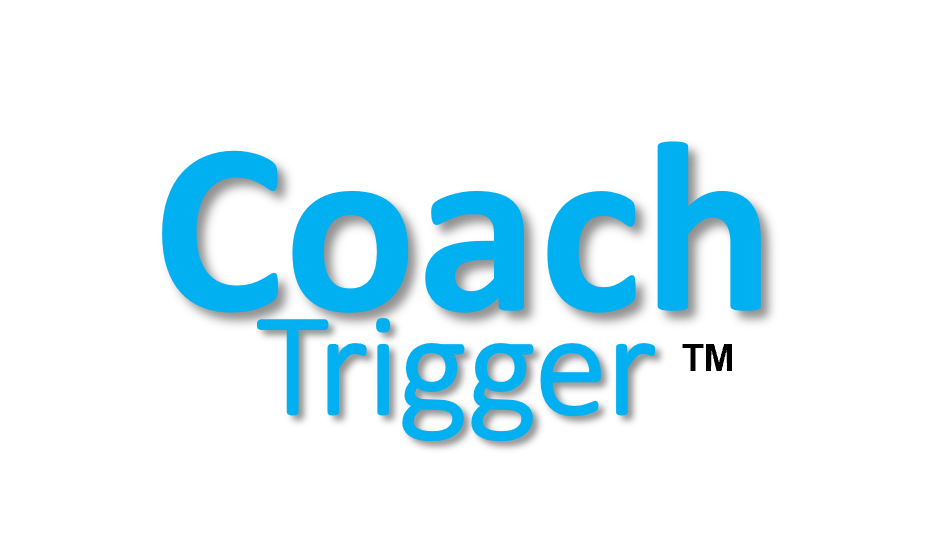Organizational Coaching: Conventional, Traditional, VS Transformational Leaders

In today’s fast-changing world of business, the key to making your organization thrive may not be what you think. It’s not just strict top-down control that matters. Effective organizational coaching can be the real game-changer. As leaders, it’s vital to balance order with creativity. The goal is to boost and uplift your teams.
This piece looks into various ways of leading. It contrasts the old-school approach with the new, innovative one. And it shows how coaching can shape the next wave of leaders who truly make a difference.1
Key Takeaways
- Understand the different leadership styles, from transactional to transformational, and their impact on organizational outcomes.
- Discover how organizational coaching can help leaders adapt to the rapidly changing business landscape.
- Explore the role of emotional intelligence, empathy, and diversity in effective leadership development.
- Learn how to integrate traditional and transformational approaches to create a balanced and innovative organizational culture.
- Gain insights into the challenges facing leaders in the higher education sector and how coaching can help address them.
The Landscape of Organizational Leadership
Leadership is always changing, especially in higher education. With fewer students enrolling and new financial challenges, leaders must be flexible and creative. They need to understand how students view the value of a liberal arts education.
Challenges in the Rapidly Changing Educational Environment
Today’s workforce is mostly young people from the Millennial and Gen Z generations. This changes what’s needed from leaders. More companies are working remotely and using hybrid models, expanding globally.
Emotionally intelligent leaders do well with these young workers, helping their companies succeed. Companies that focus on being green and socially responsible gain the loyalty of both workers and customers.
Leaders need to keep learning because business is always changing. Diverse leadership brings in top talent, boosts innovation, and makes a happy work environment. Trust and ethical behavior are key to a company’s success. A clear ethical code earns trust from within and outside the company. Companies are becoming flatter to improve communication and work efficiency as Netflix has done.
| Key Challenges in Higher Education | Potential Impact |
|---|---|
| Declining Enrollments | Reduced revenue and resources for institutions |
| Shifting Revenue Streams | Increased financial pressure and the need for innovative funding sources |
| Changing Student Perceptions of Liberal Arts Education | Declining interest and enrollment in traditional liberal arts programs |
| Workforce Dynamics Shifts (Millennials and Gen Z) | Increased demand for emotionally intelligent, adaptable, and inclusive leadership |
Traditional Transactional Leadership

The transactional approach is a classic model of leading. It focuses on clear processes and control. Here, the leader sets goals, and the team strives to meet them and if they do, employees get rewards.
Setting Goals, Meeting Expectations, and Reward Systems
This style stresses the importance of setting goals. It also includes managing performance and offering rewards. Leaders make sure their team reaches specific goals and those who do well get bonuses or promotions. This works best in steady organizations where smooth operation is key!
Limitations of Transactional Leadership
Yet, this approach isn’t always the best fit. It doesn’t help individuals grow into leaders themselves. They are more focused on meeting the leader’s needs which means creativity and new ideas might be left out and employees might not dare to risk or suggest new things.
As the business world changes fast, new leadership styles are being looked at. Many groups are turning to styles like transformational or coaching leadership. These aim to really bring out the best in teams.
Authoritarian and Delegative Leadership Styles

Besides transactional leadership, there are authoritarian and delegative styles. Each has its pros and cons and has a different impact on how well a team works together and their creativity level.
The Authoritarian Approach: Pros and Cons
The authoritarian leadership style is found in strict, top-down places like the military. For example, in a classroom environment, a team of school children doing crafts could show less creativity but more work done with an authoritarian leader. While it pushes for completing tasks, it may stop the team from thinking in new ways.
Delegative or Laissez-Faire Leadership
The delegative leadership style gives team members the freedom to carry out tasks. Yet, in the craft project study, it led to the least productivity. Children looked for more help, cooperated less, and struggled to work on their own, showing that not giving enough support can lead to problems.
It’s key for leaders to understand these different styles. Knowing the good and bad of each helps them tailor their management. This makes for a more effective and creative team environment.
Participative and Transformational Leadership
In contrast to strict leadership, we see more open styles emerging. These include employee engagement, team empowerment, and vision-based leadership which offers a new view on running a business.

The Rise of Participative Leadership
Participative leadership lets everyone share their ideas, also known as democratic leadership. It values clear talks, working together, and making everyone feel part of the team. This boosts how much employees enjoy their work and how satisfied they are and also improves solving problems and being creative by listening to many views. Participative leadership also helps people learn to lead better, with skills like sharing tasks and looking after a team.
Transformational Leadership: Inspiring and Empowering Teams
Similarly, Transformational leadership is about making people excited to reach big goals together. It makes everyone focus on the business’s plans, building stronger bonds among people and making them happier and more likely to stay. But, it needs leaders who can always keep pushing everyone to do better, meeting challenging aims. Younger generations, like Millennials, like this approach because it matches their own beliefs and goals.
Organizational Coaching: Cultivating Leaders
The workplace is changing fast. There’s a big demand for organizational coaching to build new leaders. The coaching leadership style (CLS) is like a support system combined with tough love. It helps people at work and outside it.
Traditional vs. Nontraditional Leaders in Higher Education
Over time, the line between traditional and nontraditional leaders in higher education has faded. Colleges face fewer students, changing ways to make money, and students not valuing what they learn as much. This makes it crucial for leaders to be smart and flexible.
Adapting to Changing Enrollment, Revenue, and Student Perceptions
Organizational coaching is a great way to help leaders adapt. It focuses on growing leadership skills for these challenging times. It’s about getting both kinds of leaders, traditional and nontraditional, ready to make real changes and be flexible.
| Key Coaching Indicators | Traditional Leaders | Nontraditional Leaders |
|---|---|---|
| Asking thought-provoking questions | Moderate | High |
| Building relationships with team members | Moderate | High |
| Listening and reflecting on team feedback | Moderate | High |
| Providing direct guidance | High | Moderate |
| Setting goals and designing actions | High | Moderate |
| Supporting progress and accountability | High | Moderate |
Transactional vs. Transformational Leadership in Practice
Leadership styles stand out when used in real situations. Transactional leaders focus on setting goals, guiding their teams, and trying to manage results. They often spot errors fast, using a “manage by exception” method which means they deal with problems as soon as they notice them, like if sales goals aren’t met. You see this style a lot in fields like the military, big businesses, and NFL coaching.

Characteristics of Transactional Leaders
Transactional leaders aim for short-term wins. They get people involved and sharing what they know, which can up productivity and profit. But, they might not be the best for sparking long-term creativity and big project success – keys of transformational leadership.
Characteristics of Transformational Leaders
Transformational leaders have a special touch. Psychologist Ronald E. Riggio lists the “Four I’s” that make up their style. This includes being a big role model, stirring up motivation, caring about each person, and getting minds buzzing with new ideas. People like Martin Luther King, Jr. and Oprah Winfrey are great examples of this. They boost confidence, question old ideas, and turn dreams into reality. This kind of leadership needs a lot of teamwork, talking, sharing on new ideas, and helping big projects succeed.
Idealized Influence, Inspirational Motivation, and Intellectual Stimulation
The “Four I’s” of transformative leadership are like magic for team spirit. They all push for commitment, feeling involved, and knowing why the team exists. Studies show that this leadership makes both people and groups better. It helps you enjoy work more and pushes you to put in your best effort. Much better than just following rules. When we talk about leaders, some mix the two styles well. They use both transactional and transformational ways to reach top success.
Integrating Transactional and Transformational Approaches
Organizational leaders often mix transactional and transformational leadership for the best results. This blend gets the benefits of both. Transactional leaders pay close attention to tasks and efficiency. On the other hand, transformational leaders inspire new ideas and lead with a vision.
Balancing Structure and Innovation
Balance is key to organizational success. Transactional leadership ensures goals are met and efficiency is high through proper systems. Yet, having transformational leadership is also important. It encourages creative thinking and keeps the team motivated.
Great leaders know how to mix transactional and transformational styles effectively. They set up clear systems while also promoting a space for new ideas and personal growth. This approach leads to a healthy work culture that thrives on innovation and meeting goals.
Explore Different Coaching Services with CoachTrigger
In today’s changing business world, good coaching is key to making strong leaders. Whether you’re a company looking to mix different coaching styles or a solo leader wanting to grow, CoachTrigger is here to help you!
CoachTrigger has many training options. Their goal is to boost your team’s performance and happiness at work. It’s simple to add CoachTrigger to your current setup and even big companies can start using it in just 1-2 weeks. And, they can adjust the program to work well for any kind of team, like sales or customer support.
Once you’re in, CoachTrigger will help you grow as a leader. They can set up special apps and platforms for your team. You’ll also get to connect with experts who can give you advice and help with employee growth and success.
CoachTrigger makes it easy for leaders to improve their team’s skills. They offer tools to track how well your team is doing. Plus, they’re always there to help you for free, with things like setting up and answering your questions at any time. Start your 14-day trial today!






